When we want to understand an industry truly, we must understand its industry terminology. Because industry terminology frequently uses the specific sector, it is a brand new thing for a layman.
In this article, we will introduce the terminology in the kitchen sink industry.
Let’s get into it!
Sink Type
Drawn sink(press sink)
The bowl of the drawn sink is punched out by the machine, not welded. So there is no welding circuit on the back. The radius of the pressed sink is relatively larger and looks smoother.
Hand made sink
Hand made sinks get their name from the process of forming the sink by hand and welding the corners.

Apron-front(farmhouse sink)
A farmhouse or apron-front sink is a drop-in sink that has an exposed front-facing side. This means that they are designed to be added to a space cut out, especially for the kitchen counter, to blend seamlessly with a kitchen counter for aesthetic purposes.
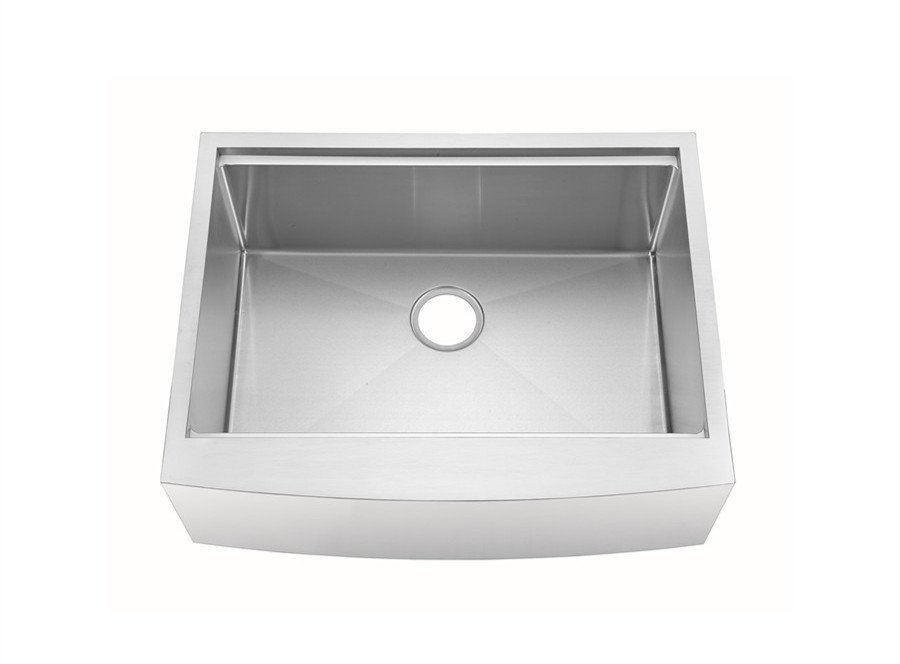
Workstation sink
At a glance, workstation sinks may look like your normal kitchen sink, but they are so much more. They offer the added benefits of specific accessories designed to increase their functionality.

Corner sink
Corner kitchen sinks come in designs that are either single or double bowls. They are used in sink cabinets installed in the corner of a kitchen looking out windows or into another room of the home.

Bar sink
Bar sinks are sometimes referred to as island sinks, prep sinks, wet-bar sinks, or entertainment sinks. They are usually smaller and shallower by design than the main sink in your kitchen. They are usually square or round and are most commonly made of copper or stainless steel.
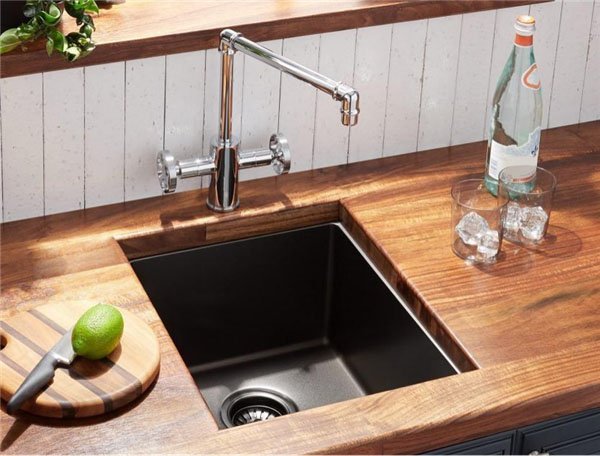
Drainboard sink
Drainboard sinks are sinks that have an attached apron, usually on one side but sometimes on both sides. This apron overlaps part of the counter. This apron (the drainboard) is grooved and slightly angled down so that water will drain directly into the sink. Most drainboard sinks are drop-in or self-rimming.

Installing methods
Top mount sink
If you drop them into a cutout hole within a benchtop for top-mount sinks, the lip will save the sink from falling straight through and clanging onto the ground. Hence, top-mount sinks are also commonly referred to as drop-in sinks.

Undermount sink
An undermount sink is holding on for dear life underneath the countertop. Due to these circumstances, an undermount sink must be specially installed through methods including sandwiching the sink lip between the underside of the benchtop and a support board, bonding the sink to the benchtop using a glue-like epoxy, or merely bolting the sink underneath the counter.

Flush-mount sink
A flush-mount sink is one in which the countertop’s surface flows seamlessly into the sink, with no visible edges or changes in the material.

Describe the part of the sink
Sink radius
Radius refers to the angles of the corners in a sink; this slight distinction can completely alter a sink’s look, style, and functionality. A sink’s radius represents the angle of all the corners.
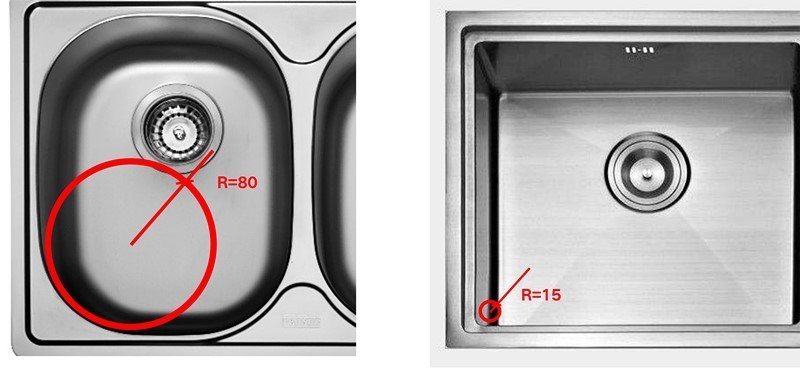
Gauge
When looking for a sink with good thickness, you need to look at the gauge number. The gauge thickness is a number that refers to how thick the stainless-steel material is that’s used in the sink. The numbers usually range from 18 to 23, and basically, the lower the number, the thicker the material.
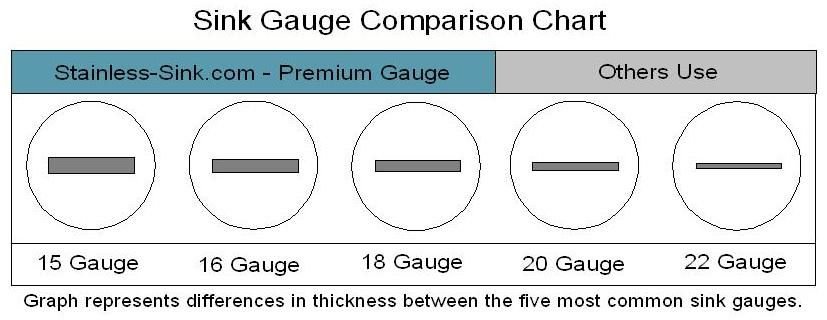
Overflow
A standard sink overflow is a hidden channel running along the underside of the sink basin. You may not be able to see it from the top of the sink and often can’t see it from below, either. There will be one or two holes near the rim of the basin at the top of the overflow channel.
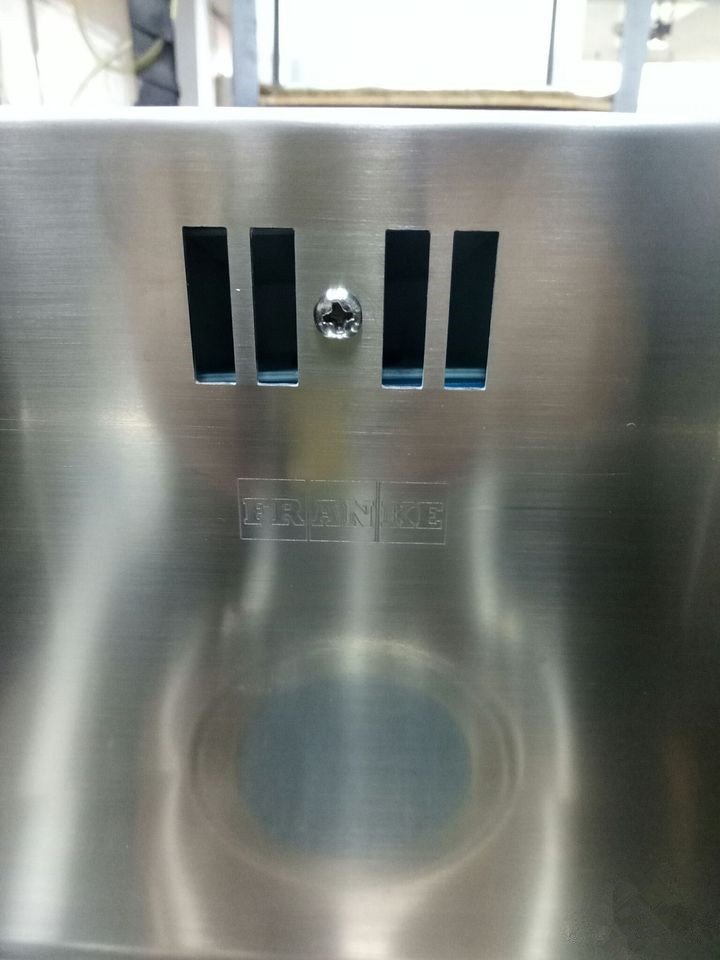
Accessories
Sink grids
Sink grids, also known as basin racks or sink racks, are a great accessory to have for use in your kitchen sink. They buffer the sound of pots and pans hitting the bottom of the basin, serve as a drainer, and protect dishes and cookware from scratching the finish on your sink.

Rolling(drying rack)
The rolling grid provides an additional prep space or drying rack in the kitchen. Stainless steel provides the durability to support heavy cookware as well as heat resistance. After use, it can be conveniently rolled up and stowed away.

Conclusion
When we understand the industry terminology, we can understand the industry better.
I hope this article helps you know more about the kitchen sink industry.

